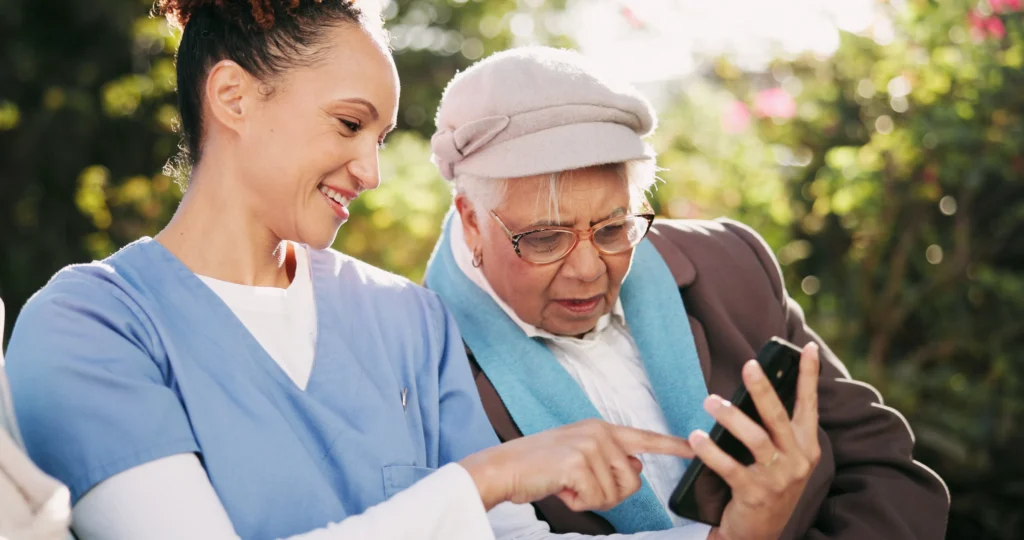October 2, 2025
Elderly Care Technology in Home Care: Key Trends Shaping 2025
Elderly care is seeing a transition in modern times. Technology is taking over. Though nothing replaces the human element, innovative devices like wearables, smart home systems, and remote patient monitoring are becoming popular home care solutions.
Find out about the latest trends and how these tools can help improve the quality of life for someone you love.
What are the Latest Senior Technology Trends?
The following tools, devices, and products are paving the way for the future of senior home care.
Wearable Devices
Wearable devices track vitals like heart rate, blood oxygen, sleep patterns, activity levels, and stress. This information provides insights to the wearer, allowing them to take control of their wellbeing and make more informed decisions. The data can also be sent directly to family, caregivers, and medical providers so they can adjust treatments and monitor for emergencies.
Smart Home Systems
Modern home systems may feature voice assistants, smart lighting, and thermostats. They allow aged individuals with mobility issues to control home settings without assistance, promoting a more independent lifestyle.
GPS Tracking
People with dementia often wander off due to confusion, anxiety, or hallucinations. GPS tracking allows them to be found easily, keeping them safe. Microchips are usually inserted in wearable devices for optimal tracking capabilities.
Home Security
Seniors are often victims of crime. Security systems keep them safe in their homes with various features such as cameras, alarms, automatic locks, and alerting emergency services. Security cameras can also allow families to monitor loved ones from afar, so they can notify emergency services if abnormal behavior is detected.
Fall Detection
Seniors are likely to fall due to medication, health conditions, or a lack of balance that develops with age. Fall detection systems, which include non-wearable sensors and AI systems, can monitor for falls and alert caregivers or emergency services.
Telehealth
Videoconferencing allows patients to attend certain doctor visits without leaving their homes. This service is especially useful for elderly people with mobility issues and other disabilities.
Medication Reminders
It is common for seniors to forget to take medication. Technology helps them remember. Individuals may receive emails, texts, and automated phone calls telling them it’s time for their daily dose. There are also smart medication management systems that will flash when a dose is due and dispense the recommended amount.
Stay at Home Embraces Technology for Better Care
Stay at Home is a home care provider you can trust. We embrace the latest innovations but understand that nothing replaces the human element. Our compassionate caregivers develop a personalized plan that addresses your loved one’s every need.
Contact us to learn how we can help your loved one regain independence and optimal well-being.
FAQs
How does technology improve the quality of life for the elderly?
Using technology improves independence. Real-time monitoring detects emergencies right away, supporting early response and reducing health risks. It also supports a safer and more comfortable home environment.
Are there any challenges associated with using technology in elderly care?
Common challenges include limited access to the internet, especially in rural areas. Seniors may also struggle to use technology correctly. There is also a potential for cybersecurity threats and disruptions that interrupt care.
How can caregivers ensure technology is user-friendly for seniors?
Caregivers can ensure technology is user-friendly for seniors by selecting devices with large screens, buttons and prints, and intuitive controls. They should also check in with seniors regularly to see how they get on with their devices and encourage feedback to improve their experience.
What are the downsides of technology for seniors?
Some argue that technology replaces the human element. It can also be costly. However, some technologies may be covered by insurance and government programs. Additionally, families that retain a personal connection with their relatives can avoid isolation-related issues.

